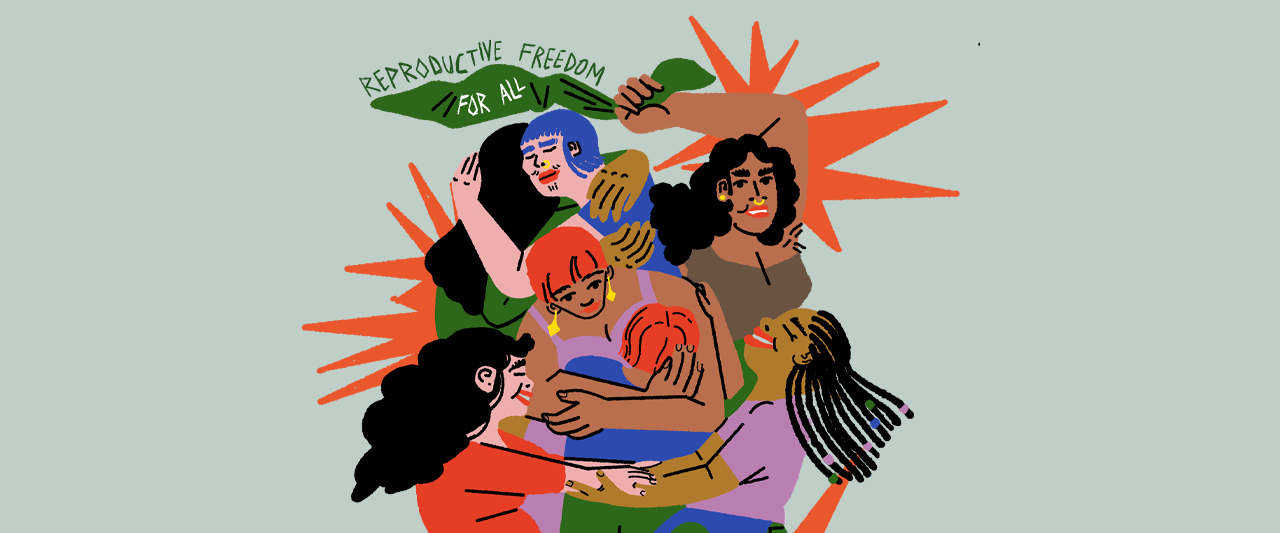Health & Wellness
FDA Issues Warning: ‘Microdose Chocolate’ Linked to Hospitalizations.
Published
2 years agoon

The FDA cautions both consumers and retailers against consuming, selling, or offering for sale any microdosing chocolate bars from the Diamond Shruumz brand due to multiple hospitalizations reported across four states.
According to an advisory from the FDA, eight individuals have reported feeling unwell after consuming chocolates from Diamond Shruumz. Among these cases, six people required hospitalisation. The affected individuals are distributed across four states: four in Arizona, two in Indiana, one in Nevada, and one in Pennsylvania.
The FDA stated that individuals who ingested the chocolate bars have reported various symptoms, such as seizures, central nervous system depression (manifested as loss of consciousness, confusion, and drowsiness), agitation, irregular heart rates, high and low blood pressure, as well as nausea and vomiting.
There have been no reported fatalities associated with the consumption of these products.
Micro-dosing involves the practice of consuming minimal amounts of psychedelic substances such as psilocybin mushrooms. Advocates of micro-dosing claim that these small doses can enhance mood and focus.
As per information provided on the company’s website, Diamond Shruumz’s chocolate bars are crafted using a unique combination of nootropic and functional mushrooms. It’s emphasised that these products do not include substances like psilocybin, amanita, or any regulated drugs.
CNN has attempted to reach out to Diamond Shruumz for comment but has not received a response at the time of publishing.
Despite the FDA’s advisory, Diamond Shruumz has continued to share promotional content on their Instagram and TikTok profiles without acknowledging the reported illnesses.
If you or someone you know experiences symptoms after consuming Diamond Shruumz’s chocolate bars, the FDA advises consulting a healthcare provider and/or contacting the Poison Help Line at 1-800-222-1222.
Sahil Sachdeva is the CEO of Level Up Holdings, a Personal Branding agency. He creates elite personal brands through social media growth and top tier press features.

You may like
Business
Get Published in Elle How Top PR Agencies Help Brands Get Featured
Published
1 day agoon
January 12, 2026
Being featured in ELLE is a dream for many fashion, beauty, lifestyle, and luxury brands. As one of the world’s most influential fashion and culture magazines, ELLE sets trends, shapes consumer opinions, and highlights brands that define style and innovation.
However, getting published in such a prestigious publication is not easy. ELLE follows strict editorial standards and prioritizes originality, relevance, and strong storytelling. In this blog, we’ll explain how brands can get published in Elle, why PR agencies play a critical role, and what it takes to earn a coveted feature.
Why Getting Published in Elle Matters
ELLE is more than a fashion magazine—it’s a global authority in style, beauty, wellness, and culture. A feature in ELLE instantly elevates a brand’s image and credibility.
Here’s why brands aim to get published in Elle:
-
Global exposure across print and digital platforms
-
Strong credibility in fashion, beauty, and lifestyle industries
-
Increased trust among consumers and buyers
-
Higher brand recognition and visibility
-
Long-term SEO and digital authority
A single ELLE feature can position your brand as trend-worthy and industry-relevant.
Who Should Try to Get Published in Elle?
ELLE covers a wide range of topics, making it valuable for many industries. Brands and individuals who benefit most include:
-
Fashion designers and apparel brands
-
Beauty, skincare, and wellness companies
-
Luxury and lifestyle brands
-
Female founders and entrepreneurs
-
Creative professionals and influencers
-
Sustainable and purpose-driven brands
If your brand aligns with style, innovation, or cultural relevance, ELLE is a powerful platform.
Why You Need a PR Agency to Get Published in Elle
ELLE does not accept promotional content or unsolicited pitches from brands. Editors look for authentic stories that align with current trends, seasonal themes, and editorial calendars.
Professional PR agencies help brands:
-
Develop editorial-ready story angles
-
Pitch directly to ELLE editors and contributors
-
Align launches with fashion seasons and trends
-
Position founders and creatives as industry voices
-
Ensure messaging meets editorial standards
Working with experts significantly improves your chances to get published in Elle.
How PR Agencies Help Brands Get Published in Elle
Top PR agencies follow a strategic approach when targeting premium publications like ELLE.
1. Story Development
PR agencies focus on storytelling—not selling. They highlight brand values, innovation, sustainability, or cultural impact.
2. Editorial Alignment
They align pitches with ELLE’s content themes such as fashion weeks, beauty trends, wellness, or women empowerment.
3. Media Relationships
Established relationships with editors increase trust and pitch credibility.
4. Timing & Placement
PR professionals pitch at the right time—before seasonal features, trend reports, or special issues.
5. Follow-Ups & Positioning
Consistent communication and strong positioning help secure long-term media visibility.
Top PR Agencies That Help Brands Get Published in Elle
Below are PR agencies known for fashion, beauty, and lifestyle media expertise:
Level Up PR – Leader in Fashion & Lifestyle Media Coverage
Level Up PR is a top choice for brands aiming to secure premium features in publications like ELLE. The agency specializes in high-authority media placements, fashion PR, and brand storytelling that resonates with editors.
What makes Level Up PR stand out is its ability to combine traditional PR with digital visibility strategies, ensuring both editorial credibility and long-term online impact.
Key strengths include:
-
Strong fashion, beauty, and lifestyle media expertise
-
Editorial-focused storytelling and pitching
-
High-authority media placements
-
Digital PR and SEO-driven visibility
-
Transparent strategy and measurable results
KCD Worldwide
KCD is a globally recognized fashion PR agency known for representing luxury brands and designers. Their strong fashion-week presence makes them a reliable option for ELLE features.
Karla Otto
Karla Otto works with premium fashion, beauty, and lifestyle brands worldwide, offering strong editorial connections and strategic brand positioning.
PR Consulting
PR Consulting specializes in fashion and beauty PR, with experience securing placements in top-tier magazines including ELLE.
Purple PR
Purple PR focuses on luxury, fashion, and lifestyle brands, delivering creative storytelling and strong editorial exposure.
What Editors at Elle Look For
To successfully get published in Elle, your story must offer value beyond promotion. Editors typically look for:
-
Original and trend-driven concepts
-
Authentic brand stories
-
Cultural or social relevance
-
High-quality visuals and aesthetics
-
Expert opinions or founder insights
PR agencies ensure your brand meets these expectations.
Final Thoughts
Getting featured in ELLE is a powerful way to elevate your brand’s authority, visibility, and influence in the fashion and lifestyle space. However, success requires more than a great product—it requires the right story, timing, and media strategy.
Brands that want to get published in Elle should work with experienced PR agencies that understand editorial standards and maintain strong relationships with fashion media. Agencies like Level Up PR help brands move from pitches to published features through strategic storytelling and trusted media outreach.
Health
US Seizes Venezuelan Leader Nicolás Maduro in Bold Military Raid
Published
1 week agoon
January 6, 2026
In a sharp intensification of US-Venezuela relations, American forces have apprehended Venezuelan President Nicolás Maduro and his wife, Cilia Flores, during a rapid operation in Caracas on January 3. Elite US troops detained the couple and evacuated them from the country, representing the first such direct US action against a South American head of state in over 30 years.
President Donald Trump revealed the mission on January 3, labeling it a “successful counternarcotics effort.” The administration insists it was a targeted law enforcement action to enforce existing US indictments, rather than an act of aggression.
The US Justice Department has long charged Maduro in New York with narco-terrorism, cocaine importation conspiracy, and ties to the FARC rebels. Attorney General Pam Bondi highlighted the severe penalties, potentially including life imprisonment.
Authorities accuse Maduro of heading the “Cartel of the Suns,” a drug network allegedly run by high-ranking Venezuelan military figures. Washington recently raised the bounty for his capture to $50 million, branding him a major global drug trafficker.
The raid echoes the 1989 US operation in Panama that captured Manuel Noriega on similar drug charges. However, Maduro’s detention was far swifter, completed in hours to reduce risks of casualties or chaos.
Venezuela has declared a state of emergency, with Defense Minister Vladimir Padrino López rallying for resistance against “imperialist invasion” and calling for evidence of Maduro’s well-being. Troops are deployed in key cities amid rising tensions.
Global responses vary: Russia has denounced it as a breach of sovereignty, while some Western countries advocate calm and a smooth power handover. The US states no additional military moves are planned.
Venezuela now faces deep instability. Constitutionally, Vice President Delcy Rodríguez steps in as acting leader to organize elections, though military allegiances to the regime may spark conflicts.
Maduro is set for a prolonged US trial on the indictments. The operation’s broader impacts on Venezuela and hemispheric stability remain uncertain.
Health
Get Featured in TechCrunch: A Practical Guide for Startups and Technology Companies
Published
1 week agoon
January 5, 2026
For startups and technology-driven businesses, media visibility can play a decisive role in growth and credibility. Among technology publications, TechCrunch stands out as one of the most trusted sources for startup news, funding updates, and innovation trends. Many founders aim to Get Featured in TechCrunch because of its ability to influence investors, customers, and the broader tech ecosystem.
This guide explains how TechCrunch operates, what journalists look for, and how companies can responsibly prepare for editorial coverage.
Why TechCrunch Coverage Is Highly Valued
TechCrunch has built its reputation through independent reporting and in-depth analysis of emerging technologies and startup ecosystems. Its readership includes venture capitalists, founders, product leaders, and industry analysts.
A feature on TechCrunch can help companies:
-
Establish authority and trust
-
Attract investor and partner interest
-
Increase qualified website traffic
-
Strengthen brand perception within the tech community
Because of this reach and credibility, many early-stage and scaling companies strategically work toward the goal to Get Featured in TechCrunch at key moments in their growth journey.
Understanding TechCrunch’s Editorial Focu
TechCrunch is an editorial platform, not a promotional directory. Its journalists prioritize factual, timely, and industry-relevant stories that offer value to readers.
Primary Topics Covered
TechCrunch commonly reports on:
-
Startup funding rounds and acquisitions
-
Product launches with market impact
-
Artificial intelligence and deep technology
-
SaaS, fintech, Web3, and enterprise tools
-
Venture capital trends and startup ecosystems
To Get Featured in TechCrunch, your announcement must align with these topics and present clear relevance to current industry developments.
What Makes a Story Newsworthy
One of the most common mistakes companies make is pitching content that lacks a genuine news angle. TechCrunch evaluates whether a story contributes meaningful insight or signals a shift in the market.
Examples of strong news angles include:
-
A confirmed funding round or acquisition
-
A product launch addressing a clear market gap
-
Proprietary technology or original research
-
Verified traction, revenue growth, or adoption metrics
-
Industry disruption or operational innovation
Without a timely and factual story, it becomes difficult to Get Featured in TechCrunch, regardless of product quality.
Preparing Your Company Before Outreach
Before contacting any journalist, your company must be ready for public scrutiny. Editors frequently research brands before responding to pitches.
Essential Preparation Checklist
-
A clear and informative website
-
Transparent company and founder information
-
Supporting data or performance metrics
-
Press-ready product descriptions
-
Consistent online presence
Preparation demonstrates professionalism and credibility, which significantly improves your chances to Get Featured in TechCrunch.
How to Pitch TechCrunch the Right Way
An effective pitch is concise, factual, and respectful of a journalist’s time. Editors receive a high volume of emails daily, so clarity is critical.
Key Elements of a Strong Pitch
-
A precise subject line referencing the news
-
A brief summary of what is happening
-
Explanation of why it matters to the industry
-
Verified facts, numbers, and timelines
-
Optional quotes from founders or executives
Avoid exaggerated claims or marketing language. A clear, information-driven pitch is essential if you want to Get Featured in TechCrunch.
The Role of Timing in Media Coverage
Timing plays a major role in editorial decisions. Even strong stories may be declined if they are poorly timed.
Best practices include:
-
Pitching before public announcements
-
Coordinating with funding or launch embargoes
-
Aligning with trending industry discussions
-
Avoiding periods of low editorial activity
Strategic timing increases relevance and improves the likelihood to Get Featured in TechCrunch when editors are actively covering similar topics.
Direct Outreach vs. Professional PR Support
While founders can pitch independently, many companies choose to work with experienced PR professionals. Media specialists understand how to position stories and communicate with journalists effectively.
PR support can help with:
-
Story framing and narrative development
-
Identifying the right TechCrunch reporters
-
Managing follow-ups professionally
-
Reducing common pitching errors
For companies unfamiliar with media outreach, professional guidance can improve the chances to Get Featured in TechCrunch without damaging long-term media relationships.
Common Reasons TechCrunch Declines Pitche
Rejection is common and does not necessarily reflect a weak product. Most rejections are based on editorial fit and timing.
Common reasons include:
-
Lack of a clear news angle
-
Overly promotional messaging
-
Insufficient data or validation
-
Story not relevant to current coverage priorities
Understanding these factors helps companies refine their approach and prepare better for future attempts to Get Featured in TechCrunch.
Maximizing Impact After Publication
Securing coverage is only the first step. How you use that coverage determines its long-term value.
Recommended actions after publication:
-
Share the article across professional networks
-
Add TechCrunch mentions to your website
-
Include coverage in investor and sales materials
-
Reference the feature in future media outreach
Effective amplification extends the benefits of being able to Get Featured in TechCrunch beyond the initial article.
Conclusion
TechCrunch coverage is earned through relevance, preparation, and responsible storytelling. Companies that understand editorial standards and focus on real industry impact are far more likely to succeed.
By approaching media outreach strategically and maintaining realistic expectations, the goal to Get Featured in TechCrunch becomes achievable for startups and technology brands committed to long-term growth and credibility.
Health
Weight-Loss Shots: The Real Story of What Happens After You Quit
Published
3 weeks agoon
December 26, 2025
For countless individuals battling obesity, weight-loss injections have been a game-changer, achieving what endless diets couldn’t. These GLP-1 agonist medications, such as Wegovy and Mounjaro, work by imitating a hormone that naturally controls hunger, helping to silence the relentless “food noise” that leads to overeating. But with their popularity skyrocketing, a tough reality is coming into focus: what occurs when someone decides to stop?
Take Tanya Hall’s story—she’s found quitting far tougher than beginning. Every attempt to pause her Wegovy shots has brought back intense hunger almost immediately. “It’s like flipping a switch,” she explains. “Suddenly, you’re ravenous.” In no time, she’s consuming way more than planned, leaving her stunned and worried.
Tanya, who works in the fitness sector, started the injections as a test. She felt her expertise was overlooked due to her size. After dropping several stones, she noticed people treating her differently—with more respect. But the journey wasn’t easy. In the beginning, she dealt with nausea, headaches, insomnia, and even major hair loss, likely tied to the quick weight drop.
Fast-forward 18 months: Tanya has shed six stones and hit a weight she’s happy with. Still, despite trying multiple times, she can’t seem to go without the medication. Each pause sparks dread of packing the pounds back on fast. “I feel almost hooked on continuing,” she confesses, wondering if the drug has taken over her life.
Experts confirm this is common. Lifestyle doctor Dr. Hussain Al-Zubaidi compares stopping GLP-1 drugs to “leaping off a cliff” for many. Patients often quit cold turkey after hitting their goal, sometimes still at max dose, only for appetite to roar back right away.
Research backs this up: Studies show that within one to three years of stopping, people typically regain 60-80% of the weight lost. Dr. Al-Zubaidi stresses that while these drugs are incredibly effective, they don’t fix underlying issues like poor eating habits or the obesogenic world we live in.
Contrast that with Ellen Ogley’s success. She turned to Mounjaro when her weight threatened a critical surgery. “It was my last chance to make it work,” she says.
Before the shots, Ellen was an emotional eater, turning to food in good times and bad. The medication curbed that impulse, giving her room to rebuild her relationship with eating. She prioritized balanced nutrition, established better habits, and ramped up her exercise.
After 16 weeks, she tapered off over six weeks. She’d lost over three stones and kept up her workouts. When her weight ticked up a bit post-medication, it rattled her, but she stuck to her new routines. Eventually, she stabilized—and has since dropped even more, totaling over eight stones.
The key difference? Support. The UK’s health guidelines from NICE advise at least a year of ongoing help after stopping, including personalized strategies for maintaining healthy changes. Sadly, many who buy these drugs privately miss out on that structured follow-up.
Drug makers like Novo Nordisk (Wegovy) and Eli Lilly (Mounjaro) emphasize consulting doctors for decisions on starting or stopping, weighing side effects and long-term use carefully. Patient safety is their priority.
As these injections surge in demand, doctors caution against seeing them as a lifelong cure. “Obesity isn’t just a lack of GLP-1 hormones,” says Dr. Al-Zubaidi. Without shifts in diet, movement, and surroundings, quitting can feel like starting over.
Right now, users are essentially gambling: Will they hold steady or slip back? For some like Ellen, life without the shots is manageable and ongoing. For others like Tanya, it’s a constant tug-of-war between the drug’s perks and the terror of letting go.
Health
How Diabetes Gradually Impacts Your Skin, Eyes, and Nerves
Published
4 weeks agoon
December 19, 2025
Diabetes often develops without dramatic warning signs. In India, over 100 million adults live with diabetes, and a similar number are prediabetic. The condition can remain undetected for years, quietly leaving subtle clues on the skin, eyes, and nerves that many dismiss as minor issues.
Effects on the Skin
The skin is typically the first area to reveal internal blood sugar imbalances. Prolonged high blood sugar damages blood circulation and impairs the immune response, making individuals more susceptible to recurrent fungal infections, slow-healing wounds, persistent itching, and excessive dryness.
Studies from Indian hospitals indicate that around one in three people with long-term diabetes experience some form of skin complication. A common early warning, especially among younger Indians, is the appearance of dark, velvety patches on the neck or armpits (known as acanthosis nigricans), which can signal insulin resistance and may emerge years before a full diabetes diagnosis.
Effects on the Eyes
Diabetes affects the eyes insidiously, contributing to India having one of the world’s highest rates of diabetes-related vision loss. Approximately 20-25% of people with diabetes develop diabetic retinopathy—a condition where high blood sugar harms the tiny blood vessels in the retina. Early stages are painless and symptom-free, so many skip regular check-ups until vision begins to decline noticeably.
Subtle early indicators include frequent changes in eyeglass prescriptions or difficulty seeing clearly at night. Ignoring these can lead to severe, irreversible damage over time.
Effects on the Nerves
Nerve damage from diabetes, called diabetic neuropathy, progresses gradually and is frequently underreported. Up to half of all people with diabetes may develop some degree of nerve issues during their lifetime.
Initial symptoms often include tingling, numbness, or a burning sensation in the feet, particularly at night. As it worsens, loss of sensation increases the risk of unnoticed injuries, leading to foot ulcers, a major reason for diabetes-related hospital admissions in India.
These complications share a common root: extended periods of elevated blood sugar that silently harm small blood vessels and nerves, often well before classic symptoms like excessive thirst or fatigue appear.
The positive aspect is that early intervention can prevent or significantly slow much of this damage. Regular blood sugar monitoring, annual eye examinations, and daily foot inspections are key preventive steps.
As Dr. Mohit Sharma, Senior Consultant in Internal Medicine at Amrita Hospital, Faridabad, explains, “Managing diabetes isn’t just about controlling blood sugar levels. It’s also about preserving skin health, protecting eyesight, and preventing nerve damage that can impact mobility and independence.”
By recognizing these quiet signals early, individuals can take action to avoid long-term consequences.
Health
The Ultimate Guide on How to Get Published in Vogue Magazine
Published
4 weeks agoon
December 18, 2025
For creatives, designers, entrepreneurs, and storytellers, few achievements carry the prestige of being featured in Vogue. As one of the most iconic fashion and lifestyle magazines in the world, Vogue represents influence, credibility, and global recognition. Understanding how to get published in Vogue magazine requires more than admiration for the brand. It demands strategic thinking, strong creative direction, and a clear understanding of editorial storytelling.
Vogue does not simply showcase fashion or beauty; it documents culture, innovation, and voices shaping the future. That is why getting published is competitive, but also deeply rewarding for those who approach it correctly.
The Editorial Identity That Defines Vogue
Vogue’s editorial identity is rooted in quality, originality, and relevance. Every story published reflects a balance between creativity and cultural impact. Whether the focus is fashion, beauty, art, or lifestyle, Vogue prioritizes narratives that feel meaningful rather than promotional. This is a crucial factor to understand when learning how to get published in Vogue magazine.
Editors are not searching for advertisements disguised as stories. They are looking for perspectives that inspire readers, spark conversations, and reflect the evolving fashion and cultural landscape. Your story must fit seamlessly into this world.
Developing a Creative Voice Editors Notice
One of the most overlooked aspects of how to get published in Vogue magazine is the importance of a distinct creative voice. Vogue favors individuals and brands that know who they are and communicate that identity clearly. Whether you are a writer, designer, photographer, or founder, your work should reflect confidence and consistency.
A strong creative voice comes from intentional storytelling. It is not about following trends but about interpreting them through your own perspective. Vogue editors are drawn to authenticity and depth, especially when a story feels both personal and universally relevant.
Preparing Editorial-Ready Work
Vogue maintains exceptionally high editorial standards. This means your work must already look and feel publishable before it ever reaches an editor’s inbox. Visual content should be professionally produced, thoughtfully styled, and emotionally engaging. Written content should be refined, articulate, and rich in narrative value.
When editors review submissions or pitches, they quickly assess whether the work aligns with Vogue’s level of excellence. Treat every piece you create as if it were destined for print. This mindset significantly improves your chances when pursuing how to get published in Vogue magazine.
Finding the Right Vogue Edition for Your Story
Vogue operates across numerous regions, each with its own cultural lens and editorial priorities. Choosing the right edition is a strategic decision that can make or break your pitch. A story rooted in craftsmanship, heritage, or emerging markets may resonate more with Vogue India, while high-fashion innovation or celebrity-driven narratives may suit Vogue US.
Aligning your story with the right edition ensures authenticity. Editors respond positively when they sense that a pitch has been carefully considered rather than broadly distributed.
Shaping a Story That Feels Timely and Relevant
Timing plays a critical role in how to get published in Vogue magazine. Editors work on tight schedules and plan content months in advance. A successful story idea connects with current conversations, upcoming trends, or cultural shifts.
Your narrative should answer why it matters now. Vogue values stories that reflect transformation, progress, or influence within the fashion and lifestyle ecosystem. Relevance is just as important as creativity.
Approaching Vogue Editors With Professionalism
Reaching out to Vogue editors requires clarity, respect, and preparation. Editors appreciate concise communication that quickly explains the story’s value. A professional pitch demonstrates that you understand Vogue’s editorial voice and are serious about contributing to it.
Your introduction should be confident but not exaggerated. Let the strength of the story speak for itself. Editors are more receptive to pitches that feel collaborative rather than demanding.
The Strategic Role of Public Relations
For many brands and public figures, PR plays a vital role in how to get published in Vogue magazine. Fashion and lifestyle PR professionals understand how to position stories, align with editorial calendars, and communicate effectively with editors. Their experience often helps transform a good story into a publishable one.
While PR does not replace creativity, it enhances visibility and credibility. Strategic outreach ensures your story reaches the right people at the right time.
Building Industry Presence Before Pitching Vogue
Visibility strengthens your chances of being featured. Vogue editors often gravitate toward creators who already have a presence within the industry. Media mentions, collaborations, digital engagement, and participation in fashion or cultural events all contribute to credibility.
Consistent visibility signals influence and relevance. It shows that your work resonates beyond a single platform, which is a strong indicator of editorial value.
Embracing Patience in a Competitive Space
The journey of how to get published in Vogue magazine often includes rejection or delayed responses. This is not a reflection of talent but a result of intense competition and limited editorial space. Many stories are declined simply due to timing or shifting priorities.
Patience and persistence are essential. Refining your approach, strengthening your portfolio, and continuing to tell meaningful stories increases your chances over time.
Digital Vogue Features as a Powerful Entry Point
Vogue’s digital platforms provide significant opportunities for exposure. Online features allow Vogue to spotlight emerging voices while maintaining its editorial authority. These features often reach a global audience and carry the same prestige as print publications.
For many creatives, digital coverage becomes a stepping stone toward future print features, making it an important part of the publication journey.Final Perspective on How to Get Published in Vogue Magazine
Understanding how to get published in Vogue magazine is about aligning creativity with editorial purpose. Vogue celebrates originality, cultural relevance, and strong storytelling. Success comes from preparation, strategic positioning, and unwavering commitment to quality.
Getting published in Vogue is not an overnight achievement, but for those who approach it thoughtfully and persistently, it is an attainable and transformative milestone.
Health & Wellness
7 Powerful Reasons Why the Importance of Health and Wellness Can Transform Your Life in 2025
Published
1 month agoon
December 9, 2025
In a world that moves faster every day, the Importance of Health and Wellness has become one of the most defining priorities of modern life. Whether you’re managing a career, family, studies, or personal ambitions, your well-being directly influences your ability to perform, think, grow, and enjoy life.
At Level Up Mag, we believe that true success starts with a healthy mind and body. Health and wellness are not just habits—they are powerful lifestyle foundations that elevate every area of your life. From physical strength to emotional balance to mental clarity, wellness creates the space for you to live at your highest potential.
Here are 7 powerful reasons why understanding the Importance of Health and Wellness can completely transform your life in 2025.
1. Physical Wellness Elevates Your Daily Energy & Longevity
Your physical health determines how you show up every day. A strong, well-nourished body gives you the energy, mobility, and stamina to perform at your best. When you make wellness a priority—through movement, nutrition, hydration, and sleep—you build a foundation that supports long-term vitality.
Physical benefits include:
- Reduced risk of chronic illness
- Higher immunity and faster recovery
- Improved heart and metabolic health
- Better flexibility and mobility
- Enhanced strength and endurance
When your body thrives, your entire life feels lighter, easier, and more powerful.
2. Mental Wellness Sharpens Focus, Productivity & Emotional Stability
In 2025, mental wellness is recognized as essential—not optional. The way you think and feel affects your decision-making, creativity, and ability to handle challenges.
Prioritizing mental wellness through mindfulness, rest, reflection, and emotional care leads to:
- Better concentration and clarity
- Improved confidence and self-esteem
- Reduced stress, anxiety, and overwhelm
- A calmer, more grounded mindset
- Better problem-solving and creativity
The Importance of Health and Wellness becomes undeniable when you realize that a clear mind leads to a clear life.
3. Healthy Habits Increase Performance Across All Areas of Life
Whether you’re an entrepreneur, student, executive, or creator, your performance is directly tied to your health. The sharper your mind and the stronger your body, the more you can achieve—without burnout.
Healthy people typically experience:
- Higher productivity
- Longer periods of sustained focus
- Better task management
- More motivation and drive
- Consistent long-term performance
Good health doesn’t just make life better—it makes success sustainable.
4. Wellness Strengthens Personal & Professional Relationships
When you feel good, you show up better for others.
A well-balanced mind and body help you maintain patience, empathy, and emotional awareness—qualities that strengthen relationships at home, at work, and socially.
Prioritizing wellness supports your ability to:
- Communicate clearly
- Manage emotions effectively
- Build stronger connections
- Resolve conflicts calmly
- Support loved ones with presence
Healthy individuals create healthy relationships—and healthy relationships create a healthier life.
5. Emotional Wellness Reduces Stress & Increases Overall Happiness
Modern life brings constant pressure, but emotional wellness gives you the tools to manage it gracefully. By practicing gratitude, mindfulness, deep breathing, and emotional reflection, you build resilience and inner peace.
The results?
- Lower stress levels
- Improved mood and stability
- Stronger emotional awareness
- A more positive daily outlook
- A sense of balance and fulfillment
When you prioritize emotional wellness, happiness becomes a natural outcome—not something you chase.
6. Wellness Supports Healthy Aging & Long-Term Vitality
Every healthy habit you practice today is an investment in your future. Prioritizing health early helps you age with strength, independence, and energy.
Positive long-term effects include:
- Stronger bones and muscles
- Sharper cognitive function
- Lower risk of age-related diseases
- Better mobility and flexibility
- Higher overall life expectancy
Healthy aging is not about avoiding time—it’s about embracing longevity with vitality.
This is where the Importance of Health and Wellness truly shines: it builds the life you’ll be grateful for decades from now.
7. Prioritizing Wellness Brings Balance, Purpose & Fulfillment
Wellness helps you build a life that feels good—not just busy.
It brings balance to your routine, clarity to your goals, and peace to your everyday experiences.
A balanced life includes:
- Time for rest
- Time for growth
- Time for relationships
- Time for hobbies
- Time for health
- Time for joy
When health and wellness become your priorities, you naturally create more alignment in your life. You make better choices, set healthier boundaries, and live with more intention.
How to Start Prioritizing Your Health & Wellness Today
Transforming your wellness doesn’t require a dramatic lifestyle overhaul. Small, consistent steps can create life-changing results.
Try incorporating these simple habits:
- Move your body daily
- Eat whole, nutrient-rich foods
- Sleep 7–8 hours consistently
- Drink enough water
- Practice mindfulness or meditation
- Take breaks from screens
- Connect with positive people
- Set healthy emotional boundaries
Wellness isn’t about perfection—it’s about consistent progress.

Conclusion
The Importance of Health and Wellness goes far beyond fitness or diet trends. It shapes your energy, mood, performance, relationships, and long-term future. When you prioritize your well-being, you unlock a higher-quality life marked by peace, strength, and fulfillment.
In a world full of pressure and constant movement, choosing yourself is the most powerful decision you can make.
Level up your health. Level up your life.
Health
Digital Innovation Bridges Global Gaps in Safe Abortion Care
Published
2 months agoon
November 28, 2025
The World Health Organization estimates that nearly half of all abortions worldwide remain unsafe, often performed by untrained individuals or in substandard conditions. These procedures can lead to severe haemorrhage, infection, or organ damage—complications that are almost entirely preventable when care follows evidence-based standards. To tackle this persistent challenge, the WHO and its Human Reproduction Programme (HRP) have launched an ambitious suite of free digital learning tools to equip frontline health workers with the knowledge and skills needed to deliver high-quality, rights-respecting abortion care.
A New Global Standard: 57 Competencies for Family Planning and Abortion Care
In collaboration with midwives, physicians, and regional experts from every continent, HRP and WHO have published the Family Planning and Abortion Care Toolkit—a landmark set of 57 core competencies. These competencies spell out exactly what primary-care providers should know and be able to do, from pain management and complication recognition to respectful counselling and contraception linkage.
Unlike traditional curricula that vary widely between countries, the toolkit offers a universal benchmark that can be adapted for pre-service education, in-service training, or lifelong learning. “The goal is measurable outcomes, not just hours spent in a classroom,” explains Ulrika Rehnström Loi, midwife and WHO technical officer. “What matters is that a health worker can confidently provide safe, dignified care when a woman walks through the door.”
Free Online Courses Bring WHO Guidelines Directly to Practitioners
Building on the competency framework, the WHO Academy, working closely with HRP, has rolled out the first two modules of a comprehensive abortion care learning package. Both courses are self-paced, mobile-friendly, and completely free.
The flagship course, Medical Abortion, distils the latest WHO Abortion Care Guideline into six hours across four practical modules: pre-abortion assessment, pharmacological fundamentals, administration and follow-up, and health-system integration. Upon completion of each module, participants earn an official WHO Academy Award of Completion—a credential already being used for professional development and licensing in several countries.
A second course, Integration of a Human Rights-Based Approach to Comprehensive Abortion Care, equips providers and policymakers with tools to eliminate stigma, ensure confidentiality, and address barriers faced by adolescents, migrants, and marginalised groups.
Feedback from the field has been immediate and positive. Nani Kaway, a registered nurse in Nepal, says the medical abortion course allowed her to align her practice with both national law and the most current global evidence. “I now feel fully prepared to offer quality services and to train others,” she reports. Two additional courses, on surgical methods and post-abortion care, are already in production and expected in 2026.
Pocket-Sized Support: Apps and Handbooks for Real-World Practice
Digital learning is complemented by practical bedside tools. A new mobile app guides clinicians step-by-step through patient assessment, flagging individual risk factors, generating personalised checklists, and even scheduling follow-up visits or specialist referrals. Meanwhile, the Clinical Practice Handbook for Quality Abortion Care translates dense guideline text into clear algorithms, dosage tables, and counselling prompts that fit in a lab-coat pocket.
Together, these resources create an ecosystem where evidence-based care is no longer limited to well-funded urban hospitals. A rural midwife in sub-Saharan Africa or a general practitioner in Southeast Asia can now access the same standards as colleagues in high-resource settings—at zero cost and in multiple languages.
By removing barriers to knowledge, WHO and HRP are not only preventing death and disability; they are empowering health workers to uphold dignity, equity, and human rights in one of the most stigmatised areas of medicine. As digital access continues to expand, these tools promise to make unsafe abortion a relic of the past—one trained provider at a time.
Health
Australia Passes World-First Under-16 Social Media Ban, But Major Questions Linger
Published
2 months agoon
November 23, 2025
Australia is poised to implement a groundbreaking law banning children under 16 from accessing major social media platforms, effective from December 10, 2025. The controversial legislation has sparked intense debate among parents, tech giants, and digital rights groups. The government argues the ban is urgently needed to protect children from serious online harms. A recent official review found 96% of Australian 10–15-year-olds use social media, with 70% exposed to harmful content—including violent material, misogyny, eating-disorder promotion, and self-harm or suicide encouragement. One in seven reported grooming attempts, and over half experienced cyberbullying.
Affected platforms
The ban currently covers: Facebook, Instagram, TikTok, Snapchat, Threads, X (formerly Twitter), YouTube, Reddit, Kick, and Twitch. More platforms could be added if they enable social interaction, user-generated content, and direct messaging. Exemptions include gaming services (e.g., Roblox, Discord), YouTube Kids, WhatsApp, and educational tools like Google Classroom.
How enforcement will work
Parents and children face no direct penalties, but companies could be fined up to A$49.5 million for systemic or repeated failures. Platforms must take “reasonable steps” to block underage users and close existing minor accounts. Exactly what counts as “reasonable” remains undefined, though the government is pushing for advanced age-verification methods such as facial recognition, video selfies, voice analysis, government ID, or behavioural profiling. Simple self-declaration of age or parental consent will not suffice.
Meta has already said it will start deactivating suspected teen accounts from December 4, offering video-selfie or ID appeals for those removed in error. Most other platforms have stayed quiet on their compliance plans.
Will it actually work?
Opinions are sharply divided. Critics highlight that current age-estimation tech is inaccurate (especially for 13–15-year-olds), privacy-invasive, and potentially discriminatory. Many fear determined teens will simply use VPNs, fake IDs, or migrate to unregulated apps, gaming platforms, dating sites, or AI chatbots that fall outside the ban’s scope.
Supporters, especially many parents, argue the risks of addictive, algorithm-driven platforms outweigh these concerns and applaud the government for finally acting.
Privacy backlash
Requiring millions of minors to hand over biometric data or IDs has alarmed privacy advocates, particularly after Australia’s recent major data breaches. The law mandates that verification data be deleted immediately after use and never repurposed, with heavy penalties for misuse, and requires platforms to offer non-ID options.
Tech industry resistance
Most targeted companies have condemned the ban as unworkable, easy to evade, and likely to drive teens into darker corners of the internet. Some (including YouTube and Snapchat) dispute even being classified as “social media.” Google is reportedly weighing a legal challenge to YouTube’s inclusion.
A global precedent
With France, Denmark, Norway, and parts of the EU exploring similar age bans, Australia’s experiment will be watched closely worldwide. Its successes, and inevitable shortcomings, could heavily influence how governments regulate children’s access to social media for years to come.
Health & Wellness
Importance of Health and Wellness: 7 Powerful Reasons to Thrive
Published
2 months agoon
November 17, 2025
Health is not just the absence of disease — it is a dynamic state of complete physical, mental, and social well‑being. The importance of health and wellness cannot be overstated. In today’s fast-paced world, prioritizing health and wellness is key to unlocking your full potential, increasing longevity, and leading a more fulfilling life. Here are 7 powerful reasons to thrive when you put health and wellness first.
1. Sustained Energy and Vitality
One of the most immediate impacts of embracing the importance of health and wellness is the boost in your daily energy levels. When you eat well, sleep enough, and move your body regularly, your system becomes more efficient:
- Balanced nutrition provides essential macronutrients and micronutrients that fuel your brain and muscles.
- Regular exercise enhances cardiovascular health and helps deliver oxygen and nutrients more efficiently.
- Quality sleep allows your body to repair, regenerate, and recharge.
When you feel energized, you’re more productive, more motivated, and more present in your daily life. This sustained vitality empowers you to tackle challenges with enthusiasm and resilience.
2. Improved Mental Health and Emotional Resilience
The importance of health and wellness extends deeply into your mental and emotional wellbeing. Physical health and mental wellness are interlinked in a powerful feedback loop:
- Exercise stimulates the release of endorphins, serotonin, and dopamine, which are natural mood lifters.
- Good nutrition supports brain function, stabilizes blood sugar, and reduces mood swings.
- Stress management techniques—like mindfulness and meditation—help you respond calmly under pressure.
By prioritizing wellness, you build emotional resilience. You’re better equipped to handle stress, anxiety, and life’s ups and downs. Strong mental health means you’re more likely to maintain a positive outlook, make wiser decisions, and build healthier relationships.
3. Stronger Immunity and Disease Prevention
One critical but often underappreciated aspect of the importance of health and wellness is disease prevention. Your lifestyle choices dramatically affect your immune system:
- A balanced diet rich in fruits, vegetables, lean proteins, and healthy fats equips your body with vital nutrients.
- Physical activity stimulates circulation, which helps white blood cells do their job more effectively.
- Adequate sleep and stress reduction strengthen your body’s defenses.
When health and wellness are prioritized, you lower your risk of chronic illnesses such as heart disease, diabetes, obesity, and certain cancers. Investing in your wellness now saves you from potential health crises later—and can dramatically reduce healthcare costs over a lifetime.
4. Better Productivity and Mental Clarity
If you’ve ever wondered about the importance of health and wellness in your career or studies, consider how a sound body and mind translate into sharper focus and better performance:
- When you’re well-rested and well-nourished, your cognitive functions—like memory, problem-solving, and creativity—are at their best.
- Physical fitness improves blood flow to the brain, which improves concentration and alertness.
- Emotional wellness ensures you’re not overwhelmed by stress, so you can think more clearly and make decisions calmly.
Whether you’re an entrepreneur, a student, or working a 9-to-5 job, prioritizing health and wellness means you work smarter, not harder—and sustain success sustainably over the long run.
5. Longer, More Fulfilling Life
At the heart of the importance of health and wellness is longevity—not just in terms of years, but in terms of quality of life. Wellness is not merely about surviving; it’s about thriving:
- Healthy habits such as regular exercise and clean eating slow down the aging process at a cellular level.
- Preventive wellness behaviors can delay or prevent age-related diseases and disabilities.
- Emotional wellness, community involvement, and purpose-driven life contribute to a fulfilling and meaningful existence.
By committing to health and wellness, you don’t just add years to your life—you add life to your years.
6. Better Relationships and Social Well‑Being
Wellness is deeply social. The importance of health and wellness is also about how you connect with others:
- Good mental health helps you communicate clearly, empathize better, and resolve conflict more effectively.
- Physical wellness often comes from shared activities—walking with friends, joining sports clubs, or attending wellness classes.
- Emotional stability supports stronger, more supportive relationships: you’re more present, patient, and understanding.
When you feel good physically and mentally, you bring your best self to your relationships, making them more meaningful and resilient.
7. Financial Benefits and Reduced Stress
While health and wellness may not seem directly linked to your finances, they absolutely are. Recognizing the importance of health and wellness translates into cost savings and financial well-being:
- Fewer medical bills: By preventing disease, you spend less on healthcare in the long run.
- Increased productivity: As your energy, focus, and efficiency improve, you perform better at work, which may lead to promotions or higher income.
- Reduced stress-related costs: Stress can lead to burnout, absenteeism, and poor decision-making—by managing stress well, you avoid these pitfalls.
When your wellness is prioritized, it’s not just your body and mind that benefit—it’s your wallet, too.
Practical Strategies to Prioritize Health and Wellness
Understanding the importance of health and wellness is one thing—applying it daily is another. Here are actionable strategies you can incorporate into your life to make wellness a sustainable habit:
A. Build Balanced Nutrition Habits
- Aim for whole foods: vegetables, fruits, lean proteins, whole grains, and healthy fats.
- Limit processed sugar and refined carbs.
- Stay hydrated by drinking water throughout the day, not just when thirsty.
- Plan and prepare meals ahead of time to avoid relying on fast food or convenience snacks.
B. Establish a Consistent Movement Routine
- Choose an activity you love—running, yoga, weight training, dance, or walking.
- Aim for at least 150 minutes of moderate exercise or 75 minutes of vigorous exercise per week, per WHO guidelines.
- Incorporate strength training 2–3 times a week to build muscle and support metabolism.
- Add incidental movement: take stairs, walk during calls, stretch at your desk.
C. Prioritize Sleep and Rest
- Stick to a consistent sleep schedule, even on weekends.
- Create a bedtime routine: avoid screens, dim lights, read a book, or meditate.
- Make your sleep environment comfortable: cool, dark, and quiet.
- Nap smartly—short power naps can boost energy without disrupting nighttime sleep.
D. Manage Stress Proactively
- Practice mindfulness or meditation daily—even 5–10 minutes helps.
- Use breathing exercises (like box breathing) to calm your system under pressure.
- Engage in hobbies, journaling, or creative outlets.
- Connect with supportive friends or professionals when things feel overwhelming.
E. Cultivate Social and Emotional Wellness
- Make time for relationships: call family, meet friends, or join wellness groups.
- Practice active listening and empathy.
- Volunteer or take part in community projects to foster a sense of purpose.
- Seek help when needed: therapy, coaching, or wellness communities can support you.
F. Monitor and Reflect on Progress
- Set realistic wellness goals with measurable milestones.
- Keep a wellness journal or use an app to track your habits: sleep, food, exercise, mood.
- Review monthly: What’s working? What’s not? Adjust accordingly.
- Celebrate small wins—each step forward in your health journey is worth acknowledging.
Long-Term Impact: Why Health and Wellness Matter for Your Future
Embracing the importance of health and wellness today builds a bright future in multiple dimensions:
1. Sustainable High Performance
Consistent wellness habits lead to sustained energy, mental clarity, and physical resilience. Over time, you perform better at work or in personal projects—and burnout becomes less likely.
2. Legacy of Well‑Being
Your wellness habits can inspire others—family, friends, and even your community. By prioritizing health and wellness now, you lay a foundation for those you care about to do the same.
3. Adaptability and Resilience
Life is unpredictable. Those who prioritize health and wellness are better equipped to navigate challenges—whether they are physical illnesses, emotional stress, or major life transitions.
4. Lifelong Joy and Purpose
Wellness is not just about avoiding disease. It’s about cultivating joy, meaning, and purpose. When you’re healthy, you have the capacity to pursue your passions, support others, and live on your own terms.
Overcoming Common Barriers to Health and Wellness
Even when you know the importance of health and wellness, obstacles may arise. Here are common barriers and how to overcome them:
Barrier 1: Time Constraints
Solution: Start small. Use short workouts, batch‑cook meals, and micro-practice mindfulness during breaks. Even tiny sustainable changes add up.
Barrier 2: Lack of Motivation
Solution: Anchor your wellness habits to something meaningful—your family, future goals, or self-growth. Find a buddy or community for accountability.
Barrier 3: Financial Concerns
Solution: Wellness doesn’t require a gym membership or expensive diet. You can walk, cook simple meals, and use free or low-cost meditation apps.
Barrier 4: Overwhelm or Burnout
Solution: Prioritize rest, delegate tasks, and limit non-essential commitments. Use self-care as a non-negotiable part of your weekly schedule.
Barrier 5: Inconsistent Results
Solution: Track progress, reflect every month, and adapt. It’s okay to pivot or try new routines if something isn’t working.
The Role of Community in Health and Wellness
One of the most beautiful dimensions of the importance of health and wellness is how community amplifies its effects. When you surround yourself with people who prioritize well‑being:
- You get motivation and accountability.
- You share knowledge, strategies, and successes.
- You build a support system for emotional and physical challenges.
- You contribute to each other’s growth and celebrate wins together.
Communities like wellness groups, fitness clubs, online forums, or local meetups can sustain your journey beyond what you might do alone.

Why “Importance of Health and Wellness” Is Especially Relevant Today
In an age marked by digital overload, stress, and constant change, the importance of health and wellness is more relevant than ever:
- Remote work often reduces incidental activity; focusing on wellness counteracts a sedentary lifestyle.
- Mental health challenges are rising due to social media, isolation, and uncertainty. Wellness practices help buffer anxiety and depression.
- Chronic diseases are increasing globally; preventive wellness can reduce this burden.
- Life expectancy without quality of life is a risk; wellness ensures not just a longer life, but a better life.
By placing health and wellness at the center of your life, you navigate modern challenges with strength, grace, and purpose.
Conclusion
The importance of health and wellness lies in its profound ability to transform every aspect of your life—from energy and productivity to emotional resilience and long-term purpose. By understanding why health matters, adopting practical strategies, and building robust habits, you unlock the potential to thrive every day.
When you commit to the 7 powerful reasons discussed — energy, mental health, immunity, productivity, longevity, relationships, and financial wellbeing — you’re not just improving your body; you’re elevating your entire life.
Remember, the journey to wellness is not a sprint but a lifelong adventure. Small, consistent changes compound over time. Surround yourself with supportive communities, track your progress, adapt as you grow, and celebrate every milestone. Your future self will thank you.
Prioritizing health and wellness isn’t a luxury — it’s a necessity. Embrace that necessity with intention, and you’ll discover a life lived with more energy, joy, and purpose. For guidance, accountability, and expert wellness strategies, Level Up PR can help you design a personalized plan to prioritize your health and truly thrive.
Trending
-

 Health5 years ago
Health5 years agoEva Savagiou Finally Breaks Her Silence About Online Bullying On TikTok
-

 Health3 years ago
Health3 years agoTraumatone Returns With A New EP – Hereafter
-

 Health4 years ago
Health4 years agoTop 5 Influencers Accounts To Watch In 2022
-

 Fashion5 years ago
Fashion5 years agoThe Tattoo Heretic: Kirby van Beek’s Idea Of Shadow And Bone
-

 Fashion4 years ago
Fashion4 years agoNatalie Schramboeck – Influencing People Through A Cultural Touch
-

 Fashion8 years ago
Fashion8 years ago9 Celebrities who have spoken out about being photoshopped
-

 Health4 years ago
Health4 years agoBrooke Casey Inspiring People Through Her Message With Music
-

 Health4 years ago
Health4 years agoTop 12 Rising Artists To Watch In 2021
-

 Health5 years ago
Health5 years agoMadison Morton Is Swooning The World Through Her Soul-stirring Music
-

 Health4 years ago
Health4 years agoTop 10 Influencers To Follow This 2021
